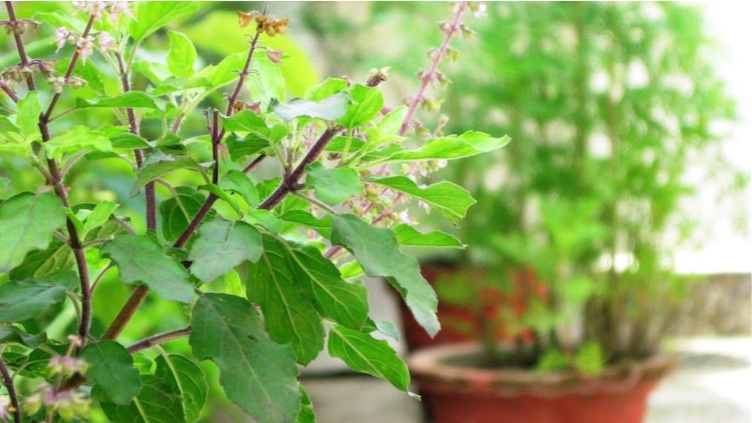Sacred Botany
By Jahnavi Harrison | Feb 08, 2019

BBC Radio 4 – Something Understood – ‘Sacred Botany’, Presented by Jahnavi Harrison
Musician Jahnavi Harrison enters a world of sacred plants revealing that, in many religious traditions, plants are seen as spiritually symbolic – sometimes acting as intermediaries with the divine world.
Jahnavi invites us on a journey to Vrindavan, a town two hours south of New Delhi, a place of pilgrimage and worship for Hindus. Vrindavan is named after the goddess Vrinda who is said to take the form of the holy basil plant Tulasi in the worldly realm. Jahnavi reveals that this same plant is lovingly cultivated in the Hertfordshire temple where she grew up and is brought into the main shrine each day during the morning worship.
She goes on to explore the significance of the lotus flower, a key symbol in many Eastern religions.
The use of plants in worship is not confined to the East. The presence of Ocimum Basilicum – which many of us know as the basil we cook with – is a common sight in regional denominations of Orthodox Christianity, especially in the Greek church. Jahnavi explains that Orthodox Christians believe the herb sprung up where Jesus’s blood fell near his tomb. Ever since, basil has been associated with the worship of the cross, particularly during Great Lent.
Drawing upon the Zen poetry of Matsuo Basho, Jahnavi discusses the lessons we can learn by paying close attention to the plants around us. Basho’s vivid depictions of the plant world are complemented by the words of Sam Taylor Coleridge, whose poem To Nature is described by Jahnavi as “a prayerful study of the plant kingdom”.
To listen to this presentation click the link below:
https://soundcloud.com/jahnavi_harrison/bbc-radio-4-something-understood-sacred-botany-february-2018












